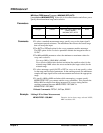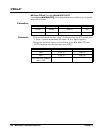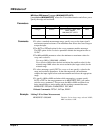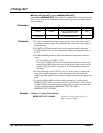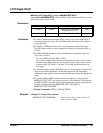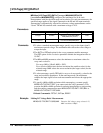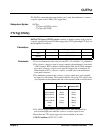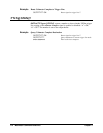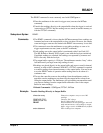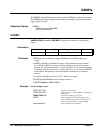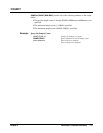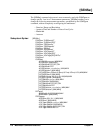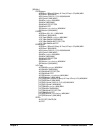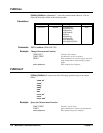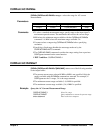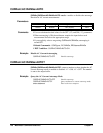
Multimeter Command Reference 113Chapter 3
READ?
The READ? command is most commonly used with CONFigure to:
• Place the multimeter in the wait-for-trigger state (executes the INITiate
command).
• Transfer the readings directly to the output buffer when the trigger is received
(same action as
FETCh? but the readings are not stored in internal memory as
with the
FETCh? command).
Subsystem Syntax READ?
Comments • The READ? command is slower than the INITiate command since readings are
formatted and sent to the output buffer as they are taken. However, the sample
count and trigger count are not limited with
READ? since memory is not used.
• This command causes the multimeter to start taking readings as soon as its
trigger requirements are met (same as the
INIT command).
• Each reading sent to the output buffer is terminated with a Line Feed (LF).
The HP-IB End-or-Identify (EOI) signal is sent with the last byte transferred.
If multiple readings are returned, the readings are separated by commas and
EOI is sent only with the last byte.
• The output buffer capacity is 128 bytes. The multimeter remains “busy” with a
full buffer until you begin removing readings from it.
• Readings are placed directly in the output buffer and are not stored in internal
memory as with an
INIT command. With INIT, a FETCh? command is required
to transfer readings from internal memory to the output buffer. You may want
to use the
READ? mode of operation when readings need to be taken at a
continuous rate.
• The rate the controller removes the readings from the multimeter needs to
match the rate the multimeter puts them into the output buffer to keep from
filling the output buffer. The multimeter will quit making measurements until
you remove readings from the output buffer and make room in the output
buffer for more readings.
• Related Commands: CONFigure, FETCh?, INITiate
Example Transfer Readings Directly to Output Buffer
dimension array
Dimension computer array to store 100
readings.
CONF:VOLT:DC
Function: DC voltage.
SAMP:COUN 100
Specify 100 readings per trigger.
READ?
Place multimeter in wait-for-trigger state and
make measurements; send readings to output
buffer; trigger source is IMMediate by default.
enter statement
Enter readings into computer.



